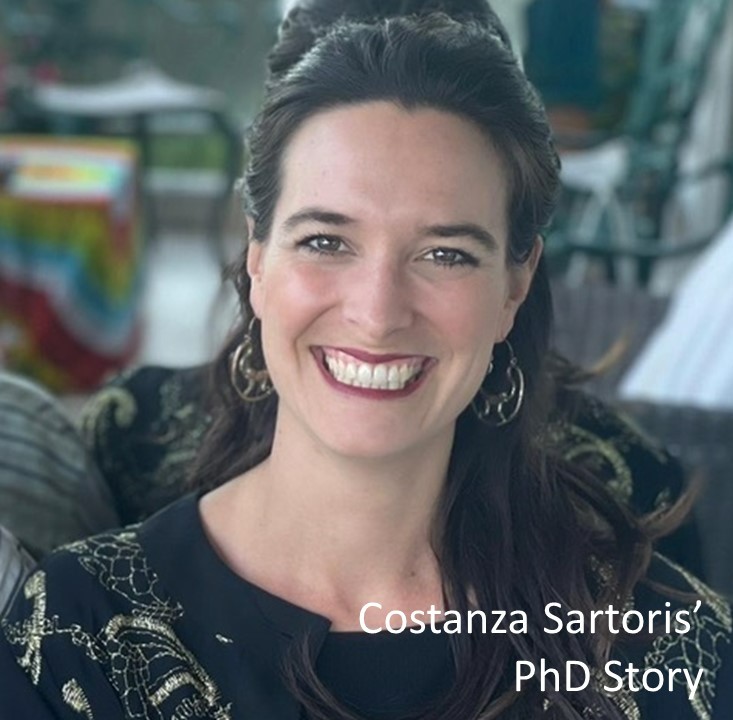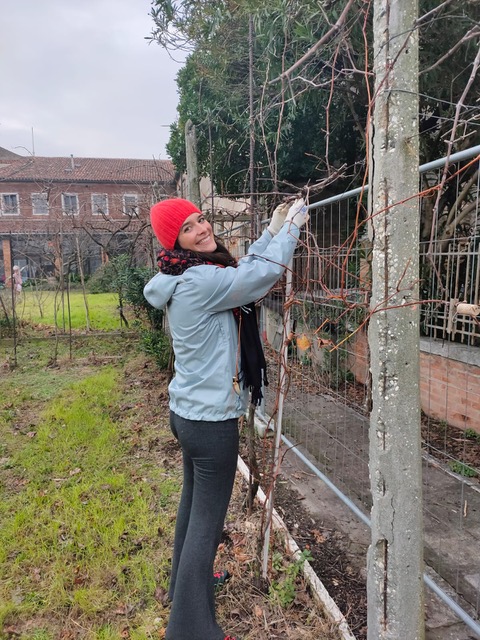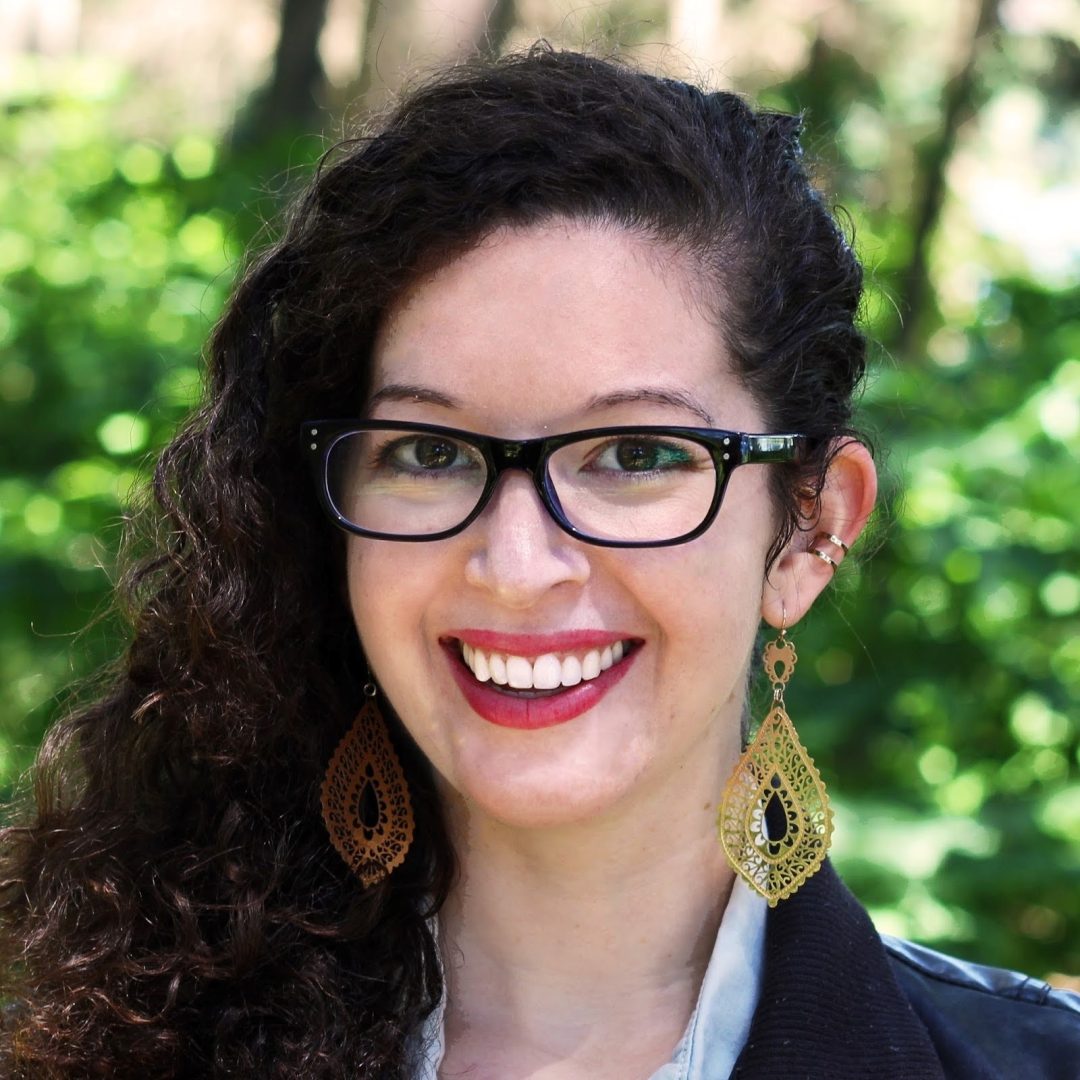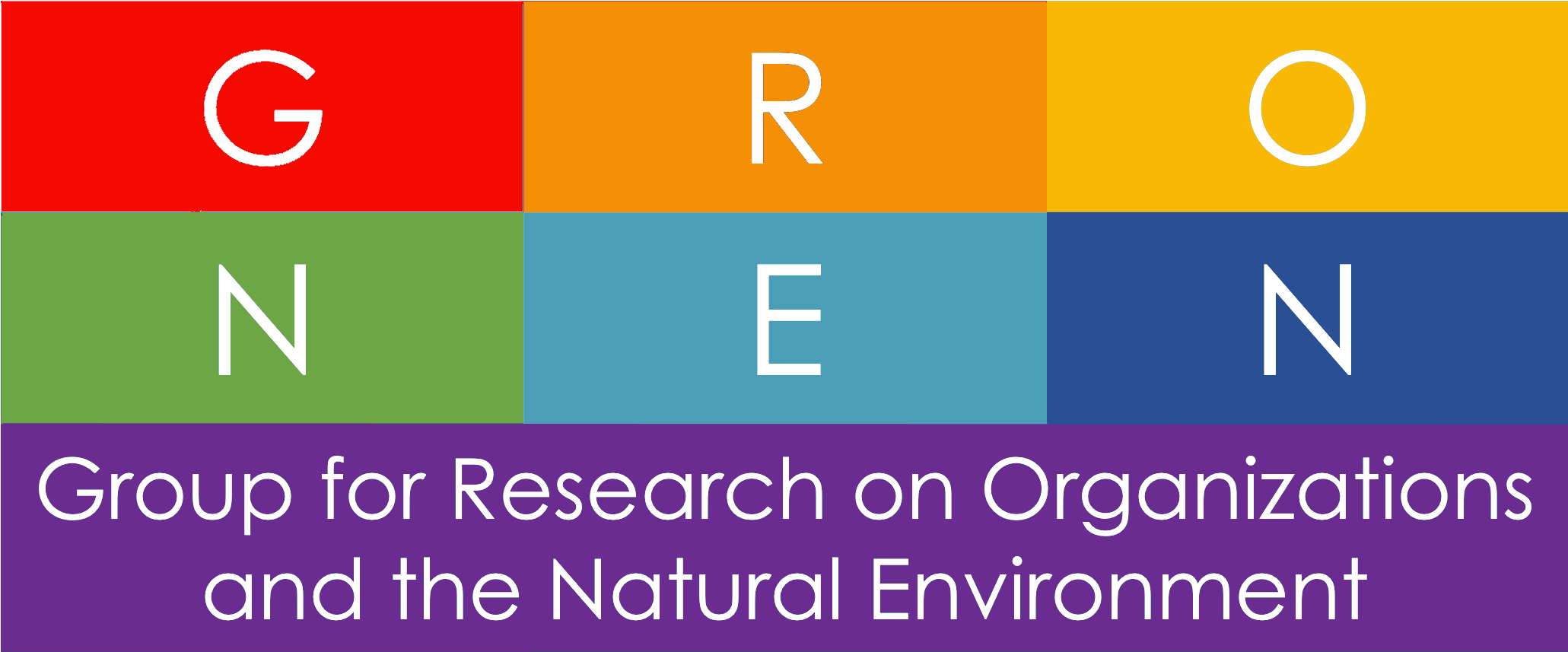
Costanza Sartoris is a PhD student at Ca’ Foscari University of Venice in Italy.
Her research imagines organizing in a way that transcends our anthropocentric stance to also include other entities.
Currently, she is finalizing her PhD focused on living root bridges and vineyards.
Here is Costanza’s story.
What are some memorable experiences you have had during your time as a PhD student?
Well, I would say that for sure field work is a highlight because it really offers you the opportunity to learn directly from a materially different reality. And it’s not only about learning from, but also learning with the others you have chance to interact with. Because, as people, we have an impact on where we go and it’s really nice to see how you can, for instance, co-develop knowledge just by talking with people. Then, I would say development workshops communities offer, for instance, the GRONEN PhD workshop, but also the Ivey Sustainability Academy. That actually was where I learned about the GRONEN community. For the third one I would say conferences, because they’re a place where you can meet peers with similar interests and eventually meet new friends!
What inspired you to pursue a PhD?
That’s a tough question, because actually I didn’t expect to do research on the topic I am doing research in at the moment. When entering the PhD, I wanted to pursue research in cultural institutions, as to how cultural institutions work and how they are managed. This is probably why I wanted to enter so badly into a PhD in management in Venice… Venice in Italy is a little bit the heart of art and culture in the country. But then our PhD is a little different compared to other PhDs, because the first year is a sort of master of research that we are asked to attend to strengthen our methodological research skills and knowledge of the discipline. Italian universities are different from, I imagine, many other European universities, with master’s degrees really following research. In Italy, master’s degrees are more about getting to know the subjects and research is a little less the focus. During this first year, I was very confused about what to do, because actually only a few people in my university were doing research in culture and institutions. But then you know, there were some intellectual clashes and I got to meet my supervisor and he proposed we develop together a research project on these incredible living artifacts, living root bridges. Living root bridges are grown from rubber trees’ aerial roots by the War-Jaintia indigenous communities and are found in Meghalaya, in north-eastern India.

In brief, what is the empirical method you are adopting in your thesis?
I am doing ethnography and interviews, trying to adopt a multispecies perspective. So, for sure I’m more on the qualitative side. In multispecies studies, scholars try to focus on subjects that are not necessarily humans to redefine the human in relationship with other beings. I would say this is my main approach. I think rather than looking from the perspective of the other, my approach is more about understanding how we as human relate to the other in a way that somehow makes the other express itself. How would a plant behave? Somehow you can answer this question thanks to science and botany. Then the way you touch the plant, the way you see others interacting with the plant, you get to learn how the plant is perceived and in turn behaves in relationship with humans.
My thesis got very disrupted by the pandemic, because my main field work was in India working with the War-Jaintia communities. But of course, since we couldn’t travel, we couldn’t reach them. So, I had to find a solution to continue my fieldwork, and this is how I ended up in viticulture. With the living root bridges, I didn’t have a direct interaction with the plant because I was learning from the War-Jaintia communities how they perceive and behave with the plant. But in viticulture, I was working in the field, and you know, at the beginning, it was winter so there were no leaves. These plants all look a little like they’re suffering because of the cold, and you start manipulating them. This manipulation really makes you feel a little bit what it means to relate with them, someone that is not human, because the way you position the plant, the way you cut it… Afterwards, you’ll see it growing during the year and you’ll see how it changes and how the plant’s shape is made thanks to the interaction you had with it.
Can you describe a “eureka moment” you might have had during your PhD?
My background is linked to the arts, and so I keep visiting art exhibitions. Probably the most important “eureka” moment I had was at the end of last year, when I visited the Architecture Biennial here in Venice. There, the “eureka” arrived at the Danish pavilion, entitled “Connectedness.” It was about how water connects humans, architecture, and life in general. It was a great pavilion and, apart from the artistic architectural side, there was a great catalog I decided to buy. And there I realized how what I was doing, which was a little bit uncommon in management, was actually something already becoming more and more important in the arts and humanities. This was really a “eureka” because I told myself: alright, it’s not foolish and there are other people who are interested in this topic through other perspectives, because maybe they are philosophers, architects, or artists. But, why not try to cross-contaminate this knowledge and try to see what management and organization studies can learn from these perspectives?
What side projects, communities, or other initiatives are you involved with?
I’m working with some colleagues and friends on some side projects linked to the arts. For instance, we organized “Matters of Lives. Encounters on the Edge of the Pluriverse,” an exhibition with a public program with two colleagues, Noemi Biasetton and Matteo Vianello. It reflected on this idea of how we can create a relationship with entities that are not humans. Another project is linked to another community here in Venice, with whom we have constructed a digital community memory called “Aqua Granda.” It’s linked to the high tide that flooded the city of Venice in 2019. It’s a totally different project from “Matters of Lives,” but we just had an exhibition as well. I feel these kinds of realms are interesting for research because they deviate a little bit from your main research topic, but they help you to build a community, including a local community in the place where you live that helps you feel grounded.
What hobbies or interests do you enjoy outside of work?
I’m really passionate about art, and contemporary art and photography especially. I’m very privileged and lucky to live in a city like Venice: here there is an overdose of art! But I also love walking, especially in nature, and probably this is why I decided to do the field work in the places that I’m doing them.
What three tips would you offer to new PhD students in your field?
- Follow your passions, also outside of academia. When you do a PhD, you tend to be overfocused and overstressed. The PhD is only one part of your life, so always remember to follow your passions even if not related to the PhD… They might bring you to focus on something you wouldn’t probably study as if it were your main PhD topic, but this might be of help in the future!
- Find a community to support you. For instance, the GRONEN community could be one, but also peers in your own university. It’s important to have peers to talk with and to whom you can reciprocally support each other!
- If in your university you’re the only one doing certain kinds of topics, don’t fall in the trap of feeling like you are the only one in the world: use the Internet and find the people who think like you do. For sure someone in the world is there to support you!
- I would add a fourth point for the ones doing ethnography: when you go into the field, create a relationship with people. Try to go beyond the extractionist approach, and really become part of the community you are working with, supporting it in their activities.
In brief, what does the GRONEN community mean to you?
Well, to me the GRONEN community was a great discovery. It is a place where I met not only great peers, but I also where I built new friendships, and I think this is one of the pros of academic life that we tend to forget.
What’s next for you?
Well, now I’m trying to wrap up my thesis since I should be a doctor by June 2023. So, at the moment I am very focused on this deadline. I hope to have a nice holiday in summer and then my dream would be to win a Marie Curie Fellowship. Of course, it’s a very ambitious long-time process, so let’s see how it works out… finger crossed!
Contact
If you would like to reach out to Costanza, you can contact her via email or on LinkedIn.

Elizabeth M. Miller is a doctoral candidate at Aalto University School of Business in Finland. Her work focuses on systems change and circular economy.
